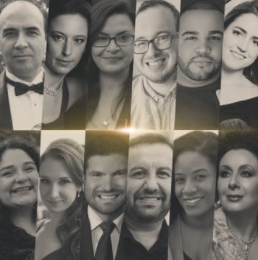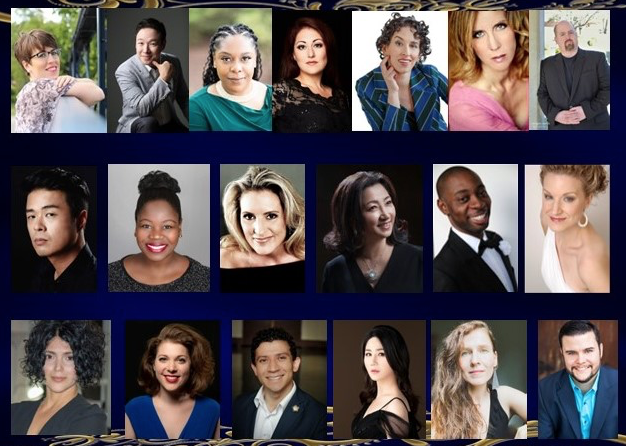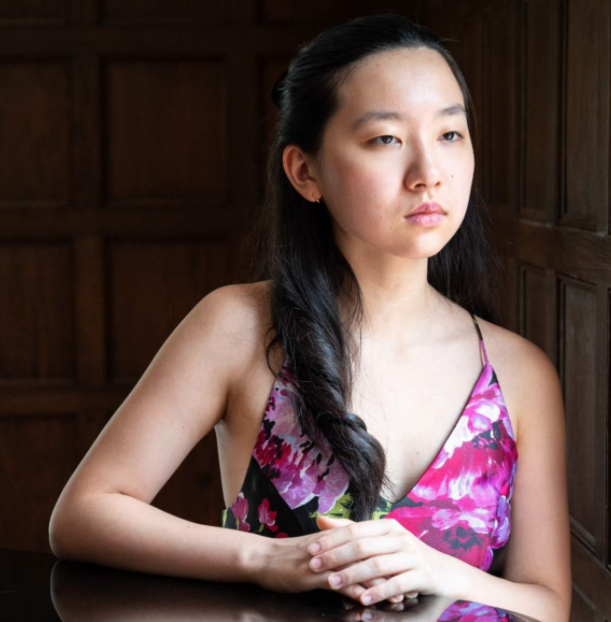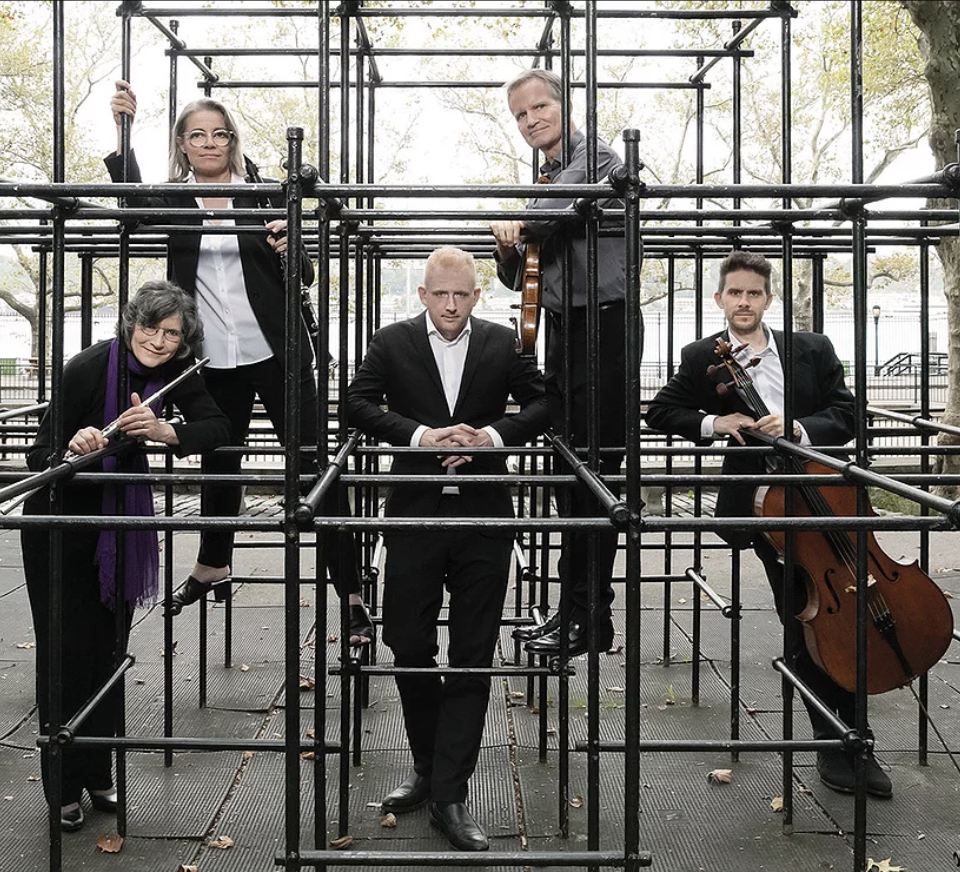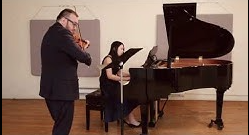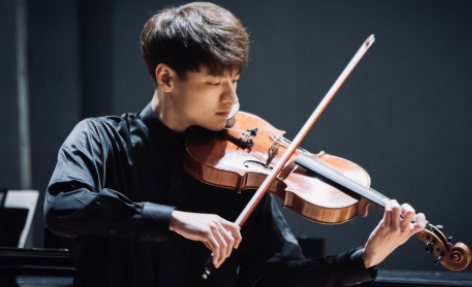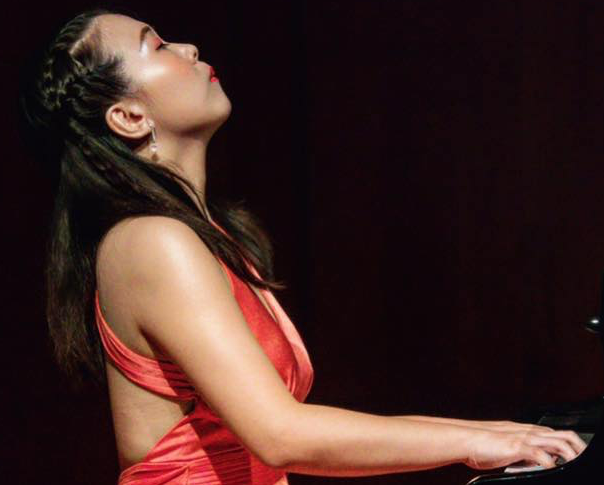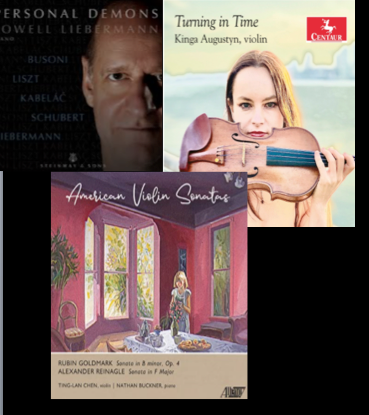Personal Demons: Lowell Liebermann, pianist, in music of Liszt, Schubert, Busoni, Miloslav Kabeláč, and Lowell Liebermann, Steinway & Sons 30172
Turning in Time: Kinga Augustyn, violinist, in music of Elliott Carter, Luciano Berio, Krzysztof Penderecki, Grażyna Bacewicz, Isang Yun, and Debra Kaye, Centaur Records CRC3836
American Violin Sonatas: Ting-Lan Chen, violin; Nathan Buckner, piano, in music of Rubin Goldmark and Alexander Reinagle, Albany Records TROY1840
News of quarantines and lockdowns may accentuate what musicians have not been doing, but what some have been doing is quite exciting, and three recordings that landed in my mailbox are good examples. Two are of new or unfamiliar violin music (solo and with piano) released within the past few months, and one is a two-CD set of all solo piano music to be released February 5.
Though the three recordings are quite different, they all share the qualities of exploration – exploration of deferred personal repertoire dreams (or “personal demons” in the case of Lowell Liebermann’s CD), exploration of expanding roles as performer and composer (in Personal Demons as well as American Violin Sonatas), and the exploration of how our music connects us to other periods in history (in all three, but overtly in Kinga Augustyn’s Turning in Time).
***
Starting with the upcoming release, it is an honor to recommend the double-CD set on the Steinway & Sons label entitled Personal Demons, featuring world-renowned composer Lowell Liebermann (lowellliebermann.com), one I’ve admired for several decades. Here he is heard in the role of pianist. Though there is nothing new about Lowell Liebermann’s pianistic strengths (as the idiomatic keyboard writing in his compositions will attest), Personal Demons marks his first solo CD in which he is the pianist, and he is outstanding.
In addition to playing his own Gargoyles, Apparitions, and Nocturne, No. 10, Op. 99 – an education for those who have played these – he offers a selection of formidable works by other composers. As Mr. Liebermann writes, “Personal Demons consists of music that I have been personally haunted by – pieces written by other composers that have preoccupied me and inspired me for most of my compositional career, ones that ‘I wish I wrote.’ Framing these are three of my own pieces that have special significance for me.”
Least known on the two discs may be the Preludes, Op. 30 of Czech composer Miloslav Kabeláč (1908-1979), which bear some kinship to the music of Kabeláč’s countryman Janáček. Kabeláč has a highly sympathetic interpreter in Lowell Liebermann, and these miniatures emerge as treasures. Some musicians may be inspired to purchase the set for these gems alone, but Mr. Liebermann closes the first disc with the hair-raising Totentanz of Franz Liszt, which he plays with ferocity – and then there’s disc two.
On the set’s second disc, after his own marvelous Apparitions, Mr. Liebermann plays the Variations on a Theme of Hüttenbrenner, D. 576, by Franz Schubert, a composer whose music he cherishes, as he reveals in his personal and informative program notes. The D. 576 Variations are striking for their harmonic twists and turns, and though some pianists (the relatively few who play them) tend to smooth things over as if to disguise what may be perceived as quirks, they are all consciously laid out here in what is a faithful and insightful performance.
As if these works were not already enough unusual fare to draw pianophiles, Mr. Liebermann includes the monstrous Fantasia Contrappuntistica (solo piano version) by Ferrucio Busoni. The latter is a notoriously massive undertaking, musically and pianistically – Herculean striving with Bachian inspiration at its core. To be frank, I’ve never taken to this piece and would probably only enjoy it upon consumption of some mind-expanding drug, but Mr. Liebermann’s version will undoubtedly take an important place alongside the not too numerous versions available. Bravo for taking it on – and with mastery!
For this listener, a high point was hearing the closing work, Mr. Liebermann’s own Nocturne No. 10, Op. 99, written in memory of the composer Gian Carlo Menotti. Between the potent lyricism of the composition itself and the expressive performance, it is extremely moving, making a fitting closing statement to follow so many pianistic adventures.
Speaking of adventures, one reads in the credits that Mr. Liebermann recorded these two discs in August and November of 2020, mid-pandemic, at the studio of recording wizard Sergei Kvitko in Lansing, Michigan; this was at a time when many were reluctant to step outside, let alone travel from the East coast. Congratulations are in order to all involved in this meaningful achievement.
***
Switching gears to violin it is a pleasure to recommend the new CD Turning in Time (released by Centaur Records in 2021), featuring all solo works played by young violinist Kinga Augustyn, whose career I’ve followed for about a decade now (kingaaugustyn.com). Ms. Augustyn has the natural musicality, keen intellect, and highly developed technique to turn the thorniest of compositions into child’s play, and so it is hard to imagine a better advocate than she is for a program of such challenging violin works of the 20th and 21st centuries.
According to the author of the program notes, Ted Mirecki, the term “modern” in music is often used in a pejorative sense to denote “a radical departure from the past”, and in his words “this collection refutes that conception – it demonstrates that musical ideas, turning in time, represent a continuum over the past several centuries. Specifically, the spirit of J. S. Bach pervades many of the works.” (The latter is a worthy connection to strive to hear, though of course the listener hoping for something resembling Bach tonally may be surprised.)
Starting off with Four Lauds of Elliott Carter, (dedicated to musicians Aaron Copland, Goffredo Petrassi, Robert Mann, and Roger Sessions), Ms. Augustyn opens with a beautiful sound right from the start. One is reminded of yet another reason “modern” is sometimes used pejoratively, and the reason is that not every violinist is Kinga Augustyn! The screeching and scratching that some associate with the music of our time may often be due not to the compositions but to the players; Ms. Augustyn, though, has intonation so true and a tone so singing that one can imagine a listener actually humming a few bars of Four Lauds after hearing her. One is not told whether Elliott Carter (who passed away in 2012) ever heard Ms. Augustyn play these, but one can imagine that he would have been delighted to know and work with her.
Fortunately, two composers heard on this disc did meet this violinist, and two World Premieres of their works are presented here, the Capriccio (2008) by Krzysztof Penderecki (1933-2020) and the title work, Turning in Time (2018) by Debra Kaye (b. 1956).
The Penderecki Capriccio is highly virtuosic in what is described in the booklet notes as a “neo-Romantic” (imagine a Paganini work updated with wider range, playing behind the bridge, etc.). This piece seems absolutely tailor-made for Ms. Augustyn, who has recorded all the Paganini Caprices and could probably toss them off while catching a train. A 2013 photo in the CD booklet of a smiling Penderecki with Ms. Augustyn seems to foretell of this impressive premiere, though the notes don’t mention the details of whether he heard it or not before he passed away in 2020 (the recording sessions were in 2017, 2018, and 2019 at Martin Patrych Studios in New York, engineered by the much sought-after Joseph Patrych).
Turning in Time, the final track and title work for the CD, was written expressly for Ms. Augustyn, who requested from composer Debra Kaye that it make reference to Bach’s Chaconne from the Partita No. 2 in D minor, and it is a tour de force. It is (in the composer’s words), “21st century music periodically interspersed with Bach-like phrases, motifs returning in new variations, juxtaposing past and present, reflecting on things that have changed and what remains the same, in a conversation between the ‘then’ and the ‘now’.” Ms. Augustyn conveys all of this, and the highly expressive ending phrase from the Bach Chaconne itself leaves one with chills after so much dissonance. One can’t help thinking how interesting it would be to pair this in a concert with the entire Bach Partita No. 2 – what better way to illustrate the proposed continuum than to integrate eras and styles?
Other works on the CD are Luciano Berio’s Sequenza VIII (1976), an exhaustive exploration of an adjacent-note motif, Grazyna Bacewicz’s Sonata No. 2 (1958), given a lucid and cohesive rendition here, and Isang Yun’s compelling Bachian work, Königliches Thema (1976). As well-conceived as the CD is, each work on it deserves to be heard in its own space, which is another good reason for the serious listener to own the CD and spread out the listening. Brava!
***
We’ve now recommended a piano CD followed by a violin CD, and we’ll close by recommending a disc of music for piano and violin, entitled American Violin Sonatas (Albany Records). It features World Premiere recordings of two works that are quite late in achieving this distinction, the Sonata in B minor, Op. 4 of Rubin Goldmark (1872-1936), and the Sonata in F Major (c. 1790) of Alexander Reinagle (1756-1809), composed around a century apart. The artists are violinist Ting-Lan Chen and pianist Nathan Buckner, who have performed worldwide, working with many of the greatest musicians of our day, and who are currently Professors of Violin and Piano respectively at the University of Nebraska-Kearney.
On top of offering the pleasure of musical discovery, this CD is important historically for filling in gaps in the discography of American music. If one wants to learn about American violin-piano concert music before 1900 (aside from a couple of other composers such as Beach and Foote), a key figure to know is Reinagle. He was central in Philadelphia musical life from his arrival to the US in 1786, and though some may know of his four largescale works dubbed the “Philadelphia” Sonatas, the Sonata in F recorded here has remained unknown in what is believed to be its intended form, due to a missing violin part, either lost or not notated (though there is a recording of it as a piano piece – and in comparing recorded versions, one will notice that the addition of a sustaining instrument affords a much more spacious feel, encouraging a slower tempo in the last movement and naturally adding variety of line and texture).
Enter pianist Nathan Buckner, who with some creative scholarship, imagination, and the musicological equivalent of time travel, created a violin part for it in 2015. One could almost miss from the liner notes that he was the one behind this completion, though his work qualifies as a kind of composing; many pianists might be announcing the upcoming publication of their “signature edition” but not here (though by the way, where and when will that printed edition be available?). Mr. Buckner describes the violin part as filling “the modest English role for the violin typical of Clementi’s work rather than Mozart’s more elaborate use.” In any case, a recital-worthy sonata has been reborn, and it received its recorded premiere just a few months ago in October of 2020.
All that background would be chiefly of theoretical interest without musical quality, but Mr. Buckner and Ms. Chen join in a seamless collaboration of polish and grace. They place the music front and center at all times, and it is a joy to hear. They enhance what the music has to offer, its thematic interest, thoughtful development, drama, and lyricism. The third movement has an infectious energy that brings Haydn and other Classical greats to mind.
In addition to the Reinagle, the CD features the premiere of Rubin Goldmark’s Sonata in B minor, Op. 4. For those unfamiliar with Goldmark, he was a pupil of Dvorak and a teacher in New York whose many illustrious students included Gershwin and Copland. He was Chair of Composition for the newly created Juilliard School starting in 1924 but sometimes is lost in history’s shuffle next to his musical uncle, Karl Goldmark. His Sonata in B minor is yet another great discovery, this time in a late Romantic vein, with some noticeable influence of Brahms and Dvorak for obvious reasons. It is a sprawling work, overflowing with impassioned phrases and harmonies and quite demanding for both instruments, but, thanks to the ample technique, sensitivity, and cohesion in the duo of Chen and Buckner, the performance invites the listener in to love it. One wants to hear it repeatedly (and really should in order to assimilate it fully) – especially that sumptuous second movement – so it will be one to own.
Both Reinagle and Goldmark were recorded in July of 2018, at the Foellinger Great Hall at Krannert Center for the Performing Arts, University of Illinois, Urbana-Champaign, with excellent recording/engineering by Graham Duncan and Richard Scholwin. Collectors and music lovers may find the recording here and other major music CD vendors:
American Violin Sonatas.
by Rorianne Schrade for New York Concert Review; New York, NY

